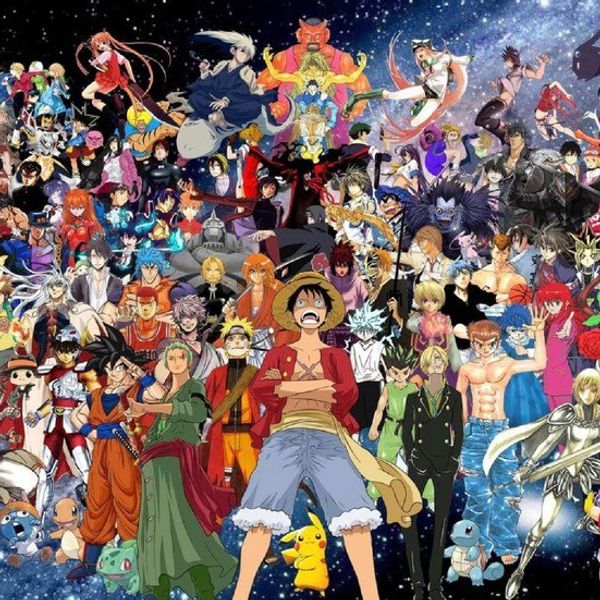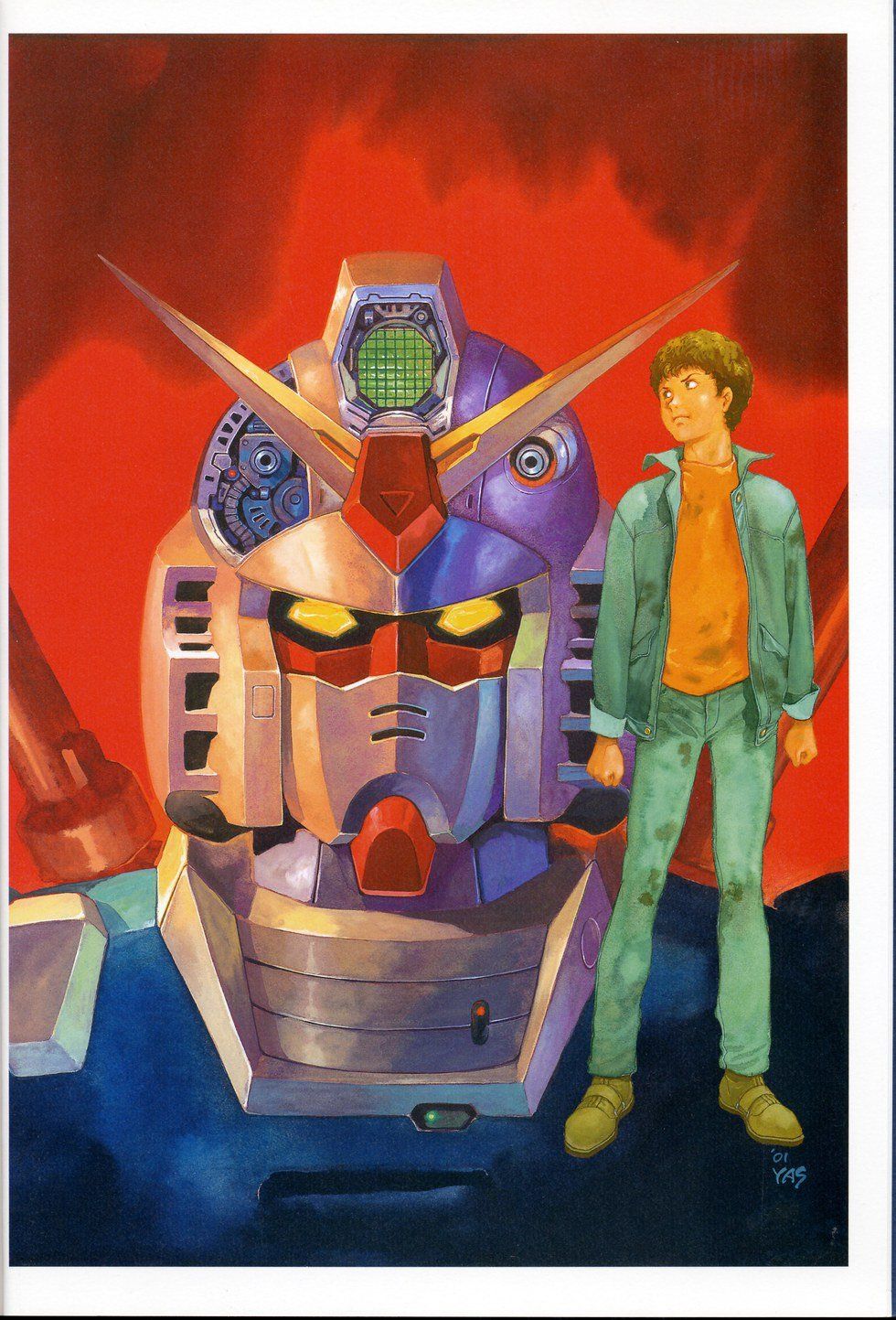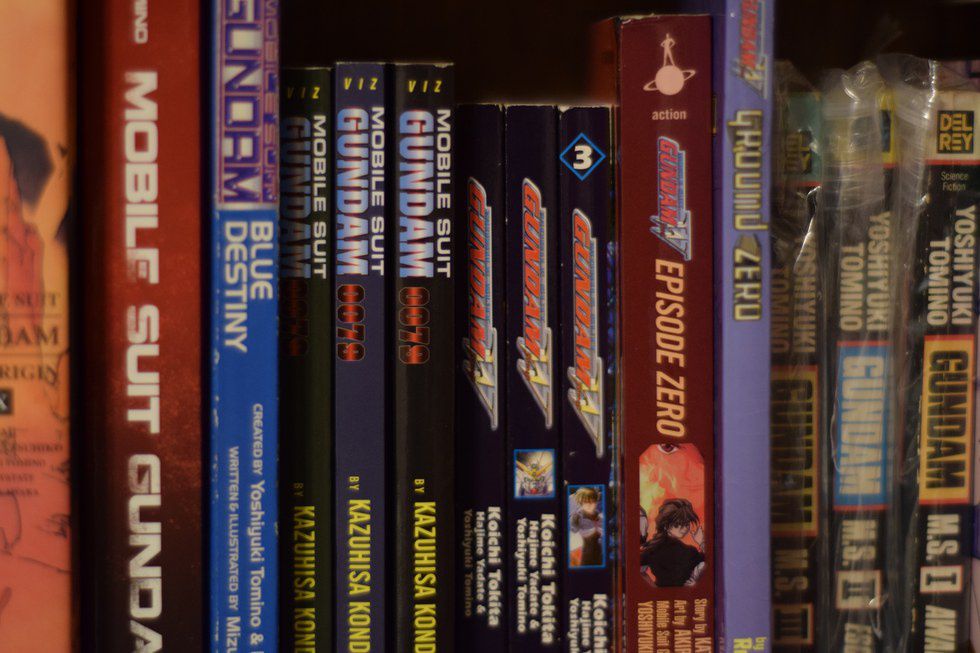When someone goes to thier local anime/comic/nerdlike convention and mentions the word Gundam in the year of 2016, you can expect one of three responses from other convention goers around them. Fan A might say something like “Yea I know Gundam, I'm a big fan of the series and I've seen everything about it.” Fan B will more than likely give a response such as “Oh man, Gundam Wing is the best gundam, I loved that show on Toonami so much, it's my childhood.” Fan C's response will be along the lines of “Yea, I think I might have heard of it?/ I never heard of it./ Is that a mecha anime?/ I don’t like robot shows so I haven’t seen it.” Despite whatever response you might get, saying the word Gundam will at least get you a response, which shows people are aware and have heard of it to say the least. If you were to say Gundam in Japan, most of the Japanese population will respond as if you were talking about Star Wars in the west. The word of Gundam has some form of potency in not only the word itself, but to those who have let it have some sort of impact on their lives.
With Gundam only a couple of years away from reaching its 40th anniversary, its legacy has left us 40 years of countless series, model kit merchandising, abundant of side stories, manga, fanfiction, and of course to the hardcore Gundam fans; Universal Century vs. Alternative Universe series, and why title X is better than your shitty title Y you like so much.
My history with hearing and knowing about Gundam goes back to March of 2000, when my 14 year old, home schooled Dragonball Z fan-self, started to see ads for an upcoming new anime title about to hit the Toonami block. Mind you, by this time for Cartoon Network, Toonami was beginning to create a ginormous boom that was underway, and carrying that was the ever growing popularity of Dragonball Z, new episodes of Sailor Moon S on the horizon, and seeing reruns of Ronin Warriors (aka Yoroiden Samurai Troopers). The advertisements for this new anime features a distant world where man has decided that giant mechanical robots would be mass produced to fight in future conflicts. Of course, the mass produced mechs couldn’t hold a candle to the main “robot heroes” and their pilots of this new show, which were called “Gundams.” All I knew was, I didn’t know what a Gundam was, but this looked like the stuff that young teen me wanted to be utterly obsessed with.
What came from the airing of Gundam Wing was a new wave of fans to be attracted to giant robot shows in the states, which was something that really hasn’t existed since the days of Voltron and Robotech in the mid-1980’s. Ok, so we did have Transformers, but Transformers didn’t seem to cut it since it was always around like the Power Rangers, and something needed to be shown to a western audience in order for people to eat up a new robot series that merchandise can be bought up at the local Wal-Mart, Target and Toys R Us stores (and KB Toys when that used to exist). Somewhere in between the giant mechanized mobile suits, cute teenage anime girls and guys to appeal to the teenage audience at home, and something of a cohesive dark plot, I got hooked HARD into the world of Gundam Wing. It was even interesting that while researching Gundam online circa 2000, I found that there were more Gundam series out there than Wing, which was hard for me to believe at the time. It was a couple of years later when I started high school that Gundam finally got its hooks dug into me hard, and hard enough for me to watch 30 years worth of different series in the past 16 years.
And can you believe that over 16 years later, I still care about Gundam to this day! It might not be in the same obsession as it once was, since growing up and finding new things to explore in life at the age of 30 will do that too you, but it's a series I always check on and continue to be engrossed in more and more. And quite honestly I highly doubt that will ever change for me, it’s too deep rooted at this point in my life. With Bandai putting on to Cartoon Network and other stations more series like the original Mobile Suit Gundam, 08th MS Team, Gundam 0080 and 0083, Char’s Counterattack, G Gundam, SD Gundam Force, Gundam Seed, Gundam 00 and the most recent airing of Iron Blood Orphans, it seems that more new fans are coming to Gundam as long as there is an audience for it on television, and as long as they’re like the innocent 14 year old me who just can’t get enough of robots in space being up other robots in space, then Gundam will always have its audience.
Sure, I can say that before Toonami, there was hardly a fanbase for Gundam in the west to exist, but I wouldn’t be fully accurate to state that. There have been several releases of Gundam way before Gundam Wing ever hit Toonami. As far as I've been able to discover from being an anime fan roughly 20 years at this point, there were Gundam fans that existed well before anything hit the American airwaves, including books, merchandise and video releases of series. There is only so much that I am aware of that was released before Gundam hit Cartoon Network in early 2000, which some I do own in my collection, while others ive seen at conventions and specialty stores off and on throughout the years. So, let me see what we got to work with here.
One of the earliest known official product to be released in America with the Gundam named attatched to it would be the novel editions off the original series Mobile Suit Gundam by the original series creator and director Yoshiyuki Tomino. Professional translater Frederick L. Schoot did the original translation of the novels that were brought out into 3 individual books based on the story arcs in the novel series between 1990 and 1991. The later editions of the book would be put out by Stone Bridge Press once they got the rights to re-release the novels again 13 years later in 2004, and then re-re-released again 8 years later, which is still now available for people to check out.
The novel and the source material it is based off tells the original story the same way, but with different elements changed within it. The original Gundam series protagonist, Amuro Ray, was a techno wiz kid in the block of a space colony in the original Gundam first episode. Amuro is then thrusted into battle when his colony is attacked by the armies of the Principality of Zeon, which is an army from a distant colony declaring war on the Earth Federation. This is when Amuro discovers and uses the top secret Federation mobile suit called the Gundam in order to stop the Zeon from attacking the colony even further. In the novels, the beginning of the story takes a different approach to Amuro, where this time he is a recruit for the Earth Federation forces that is the only person available to pilot the Gundam at the time the Zeon attack the colony. Both stories still involve Amuro to be the Gundam designated pilot throughout. The novel fans have come to believe is that this is the true vision director Tomino had for the original series, so reading the novel is a way for fans and readers alike to get a glimpse of the real creator behind Gundam, one page at a time.
There were other ways to get the word of Gundam out through other printed media other than the novels that were released. Small hobby shops across America were dedicated to carrying anime merchandise for people to order from, as mail order services started to arise. During this same time in the early 1990’s, anime started to become distributed through VHS and laserdisc inside “brick and mortar” retail places like Sam Goody, Suncoast, Funcoland and amongst others that dealt with the distribution of videos to the public audience. But with these retail locations coming up, what would be the best way to reach a wide audiance in order to sell products too? The answer would lie in the first dedicated anime magazine at the time, named ANIMAG. ANIMAG was one of the earliest magazines to write up episode summaries for series like Dirty Pair and Zeta Gundam, which after having a conversation with former Editor Trish Ledoux at an anime con a few years ago, her best response was how they would watch the episodes without any subtitles to them, and would translate what was going on the best they could to put into the magazine. Interesting enough, it wasn’t until 15 years later when the west would finally get Zeta Gundam on DVD for the first time, and their summaries were about on par with what was going on. Their efforts and committed gusto to making ANIMAG work finally expanded into what was known as Animerica Magazine.
Nimerica was the main flagship when it came to anime news, convention reports, and anime reviews that appealed to the audience in knowing what to buy and why it was important. Over time, the magazine had its fair share of advertisements from big retail locations to smaller mail order places, which is how Gundam could find an audience that way. Anime fans hungry for the mecha series can easily buy model kits, videos and manga from particular stores with their information printed on how and where to buy from. Gundam still wasn’t an American otaku house hold name just yet, but it was steadily growing more and more.
What also started to become steadily popular around the time anime was being released in America was the American manga market. The earliest forms of manga being released in the states was through the comic book model, where publishers that printed and released manga did so in comic book form by taking a chapter from a standard manga tankoban issue and making that into one comic book. The earliest releases that I am aware of in this form are from Studio Proteus Appleseed, Grey: Digital Target and the comic adaptations of Robotech, Star Blazers and Captain Harlock to just name a few. For Gundam, the earliest release I am aware off would be the comic editions for Gundam 0083, which the earliest date of their releases are from 1993. From what I have seen of them, they’re just screen caps taken from the OVA series and made into a comic book in order to sell for hungry mecha and Gundam fans at the time.
Al
It wasn’t until around 1999 when VIZ decided to put out the manga to the original Mobile Suit Gundam in comic book form, where the manga was adapted by Kazuhisa Kondo. It wouldn’t be until two years later that the comic editions would be sold in traditional Original English Language manga form (or OEL for short). That summer of 1999, Mixx Entertainment would release one of their first manga side stories to the Gundam universe titled Mobile Suit Gundam Side Story: Blue Destiny. Blue Destiny was a one volume issue based off the Sega Saturn games revolving around a test pilot and a new machine that has a will of its own, which made a strong bond between the machine and the protagonist in order to stop Zeon invasion against the Earth in the timeline of the original Gundam series (it’s sort of like Blue Comet SPT Layzner). The manga is an adaptation of the first two games on the Sega Saturn, but the story for the manga was never finished.
The year 1999 also brought us the releases of Gundam to video for the first time as officially licensed products. Between early to mid 1999, the original Gundam movie trilogy, Gundam 0080 and Gundam 0083 were released on VHS by Bandai. The original trilogy movies, which adapts the original 43 episode television series into 3 full length movies, was released in English, featuring well known voice actors like Steve Blum as the series antagonist Char Aznable. This was before Steve Blum was a household name to anime fans for being known as the voice of Spike Spiegel from Cowboy Bebop, and and even before he became the voice of our intergalactic cyborg host Tom for Cartoon Network Toonami block. It’s interesting that I bring up Toonami and Cartoon Network when it comes to Gundam in the west, because without those stations being the bandwagon to be hoisted upon for a weekday afternoon and evening television block, there was no way Gundam could have been as well known in the states as it has been over the years.
If you want an anime show to gain a strong popularity outside of Japan, then television is the way to go. This model may not be as stable as it once was 15 years ago, but when a network creates a programming block that designates where anime is being shown, then you will gain a cult following to not only the shows on that block, but even to the block itself. For Gundam to be on television for the first time in March of 2000 in an era where online anime piracy wasn’t an issue and online streaming was still a good 10 years into the future, there was no better way to reach an after school audience that was done with their daily public education hell and wanted to veg out in front of their televisions for a couple of hours before homework. This was the perfect element into creating the first real generation of western Gundam fans, with the most impressionable first introduction to Gundam being the 1995 series, Mobile Report Gundam WIng.
In Part 2, I will cover more on Gundam when it came to the high of its popularity at the turn of the new millennium, so stay tuned and comment below.






















